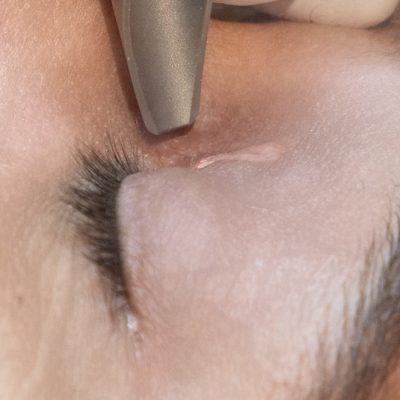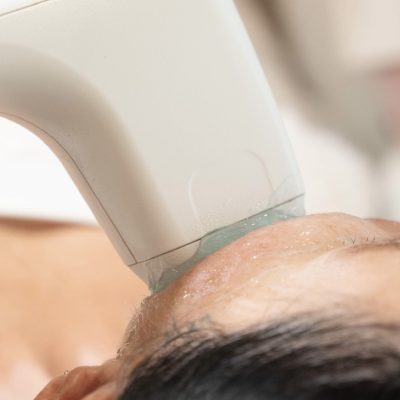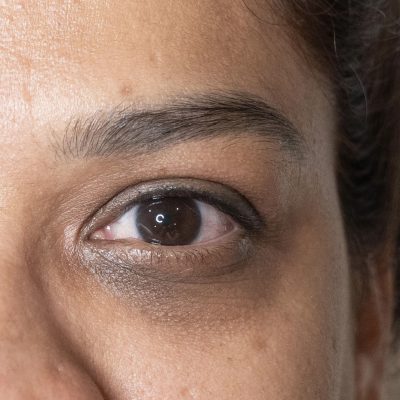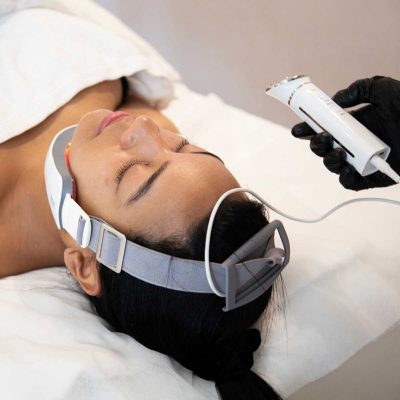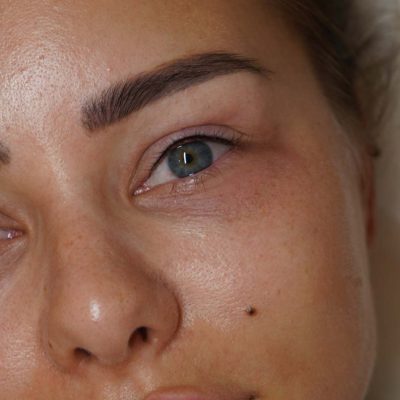Brows | April 11, 2023
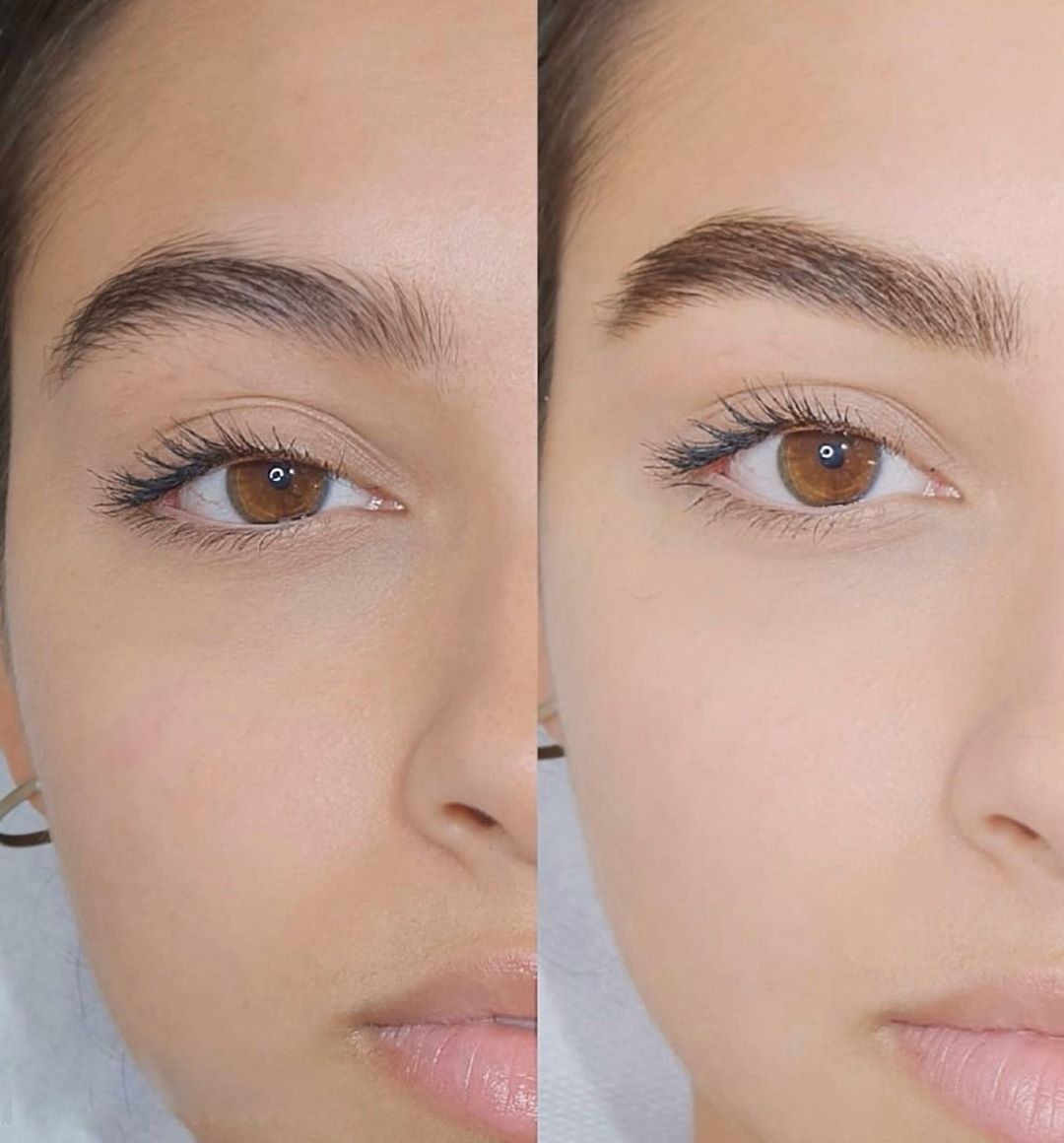
If you’ve tried everything possible in the market to get lush, thick eyebrows and have still come up short, we’ve got one word for you: Microblading. This semi-permanent tattoo technique creates the illusion of natural-looking, thick brows in just under 2 hours.
Unlike a traditional tattoo, which is permanent, microblading can last up to 3 years, but because the color effect will fade over time, touch-ups may be necessary to maintain the desired look. Here’s all you need to know about this revolutionary process.
Do your due diligence if you’ve continued to be disappointed with your hoard of brow pencils, gels, and waxes and have opted to take the microblading route. Make sure you are well informed about this semi-permanent makeup technique.
Do your research about the procedure by familiarizing yourself with the products that will be used, including finding out the types of pigments and whether allergy tests have been conducted.
View this post on Instagram
The Procedure
- Consultation
During your pre-consultation with one of our estheticians, you will be asked about your desired look and informed about expectations of the final result. Our technician will analyze your facial features and provide input on what type of brow will best suit your face. - Patch Test
After the consultation, we will always make sure we conduct a patch test on the skin at least 24 hours before the actual procedure to check for possible reactions. If there are no hiccups a day later, our esthetician will go ahead and draw your desired eyebrow shape using a measuring tool. - Obtaining Measurements
Obtaining measurements enable us to determine the start and the endpoints of the eyebrows while microblading. Special tools are used to measure directly from the eyebrows. The outline measurements will ensure that the shape of the microbladed brows does not go too far from the natural brows. - Outlining
In this step, a rough sketch is outlined on your eyebrows to understand how the chosen brow style will look. The outline is temporary and can be darker than the actual result. If the outline doesn’t seem convincing, you also have the chance to tell our therapist to make any changes to the chosen style. - Choosing The Color
Choosing the color is a critical part of microblading as it affects how your eyebrows look. Our eyebrow therapist will mix different colors to verify your skin tone and hair color. This way, you can confirm that the chosen color matches and blends seamlessly with your face. - Applying The Numbing Cream
Once you choose a color, a numbing cream is applied to the skin of the eyebrows to ensure minimum pain and maximum comfort. Our eyebrow artists typically use the cream once or several times depending on the skin, and it takes 10-30 minutes for the numbing effect to begin. - Microblading
And for the final step of the procedure, a microblade with approximately 10-12 microneedles is used to delicately tattoo the brow surface with featherlight strokes, applying a medically safe pigment just below the epidermis. Once the initial layer of the desired eyebrow shape is in place, a final layer of pigment will be added, and a mask is left on to help absorb and set the color.
How Much Does The Treatment Cost?
Treatment ranges between 2,500 – 3,500 AED. This can be subject to slight variations depending on special client requirements and treatment offerings.
Does Microblading Hurt?
We use numbing or anesthetic cream to reduce any pain associated with the procedure. At BROWZ, microblading doesn’t hurt and is pain-free. Our eyebrow therapist usually will microblade from one eyebrow to the other while simultaneously adding numbing cream to the resting eyebrow. You will only feel the pressure from the microblading tool, which may feel like a small scratching sensation.
How Long Is The Microblading Procedure?
On average, your appointment will take two hours for the consultation, discussion, measuring, outline, and choosing the color. Measuring and outlining takes the most procedure time, as they have to agree on the perfect shape of your eyebrows. The actual “Microblading” procedure will take only 30 minutes to 1-hour maximum.
Is There Any Downtime After The Treatment?
There is no downtime following our microblading treatment. Meaning most of our clients continue with their day as usual, with some gentle after-care that will, very often, not interfere with your routine. Your freshly bladed brows will look 30% darker for the first 3-5 days (which is perfectly normal and looks like you’ve darkened them using an eyebrow pencil). However, this will lighten gradually to your chosen color of choice.
How Long Does It Take To Heal?
On average, the healing process will last 4-6 weeks, depending on the type of your skin and the after-care you’ve been following. We also provide a special BROWZ after-care serum and cream for extra healing and protection.
What Can I Expect During The Healing Period?
Immediately after the treatment and during the healing period, the treated area may turn slightly red. The microblading color may appear somewhat dark; however, that’s normal because the pigment has not yet been fully absorbed. Over the next 3-4 weeks, the color will begin to fade as the pigment starts to soften gradually. When this happens, expect a certain amount of flakiness or dryness while the pigmentation slightly fades, causing your brows to look extra light. But, again, this is just the skin’s way of healing from the inside. Don’t be alarmed that the color is already wearing off; it’s just a way for any excess pigment to shed from your eyebrows naturally.
How Long Do Microblading Results Last?
On average, the microblading results last for 12-18 months and can go up to 3 years. The long-lasting nature also depends on your skin type and lifestyle. And as microblading is a semi-permanent treatment, it only deposits pigment on the superficial layer of the skin. The treatment is neither entirely permanent nor does the pigment transform into other undesirable colors as with other permanent cosmetic treatments.
Can You Get Allergic To Microblading?
While you can get allergic to microblading, it’s a very rare occurrence. Allergic reactions are experienced mainly by sensitive skins or because of any tools used in the process. You can also get allergic to microblading due to poor after-care following the microblading treatment. This includes activities like shaving, tweezing, and using triple-antibiotic cream like Neosporin and cosmetic products before the brows are fully healed. Allergic reactions are often shown by redness and swelling in the brow area. In some cases, an allergic reaction can also show puffiness along the brow bone. To some, allergic reactions to microblading can look like a small burn, which will eventually expel the ink, making your brows look like how it originally was before the microblading treatment.
Will Microblading Stop Natural Eyebrow Hair Growth?
Our microblading procedure is only an eyebrow tattooing technique that creates the look of individual hairs in sparse brows. It doesn’t involve removing the hairs in your eyebrows nor impacts your eyebrow hair growth.
Will I Still Need To Get My Natural Brows Shaped/Plucked Or Dyed After Microblading?
Most of the time, yes. As our microblading process does not affect your eyebrow hair growth, hairs will continue to grow outside of the pigmented area applied through microblading. So occasionally, and depending on the amount of hair growth, you may have to pluck stray hairs to keep your microblading defined and groomed. Thankfully, microblading will provide you the perfect shape and brow line to follow and pluck your natural eyebrows.
On the other hand, if you have naturally light hair and choose a dark color for the microblading, you may have to dye your natural brows once in a while to maintain an even color in your eyebrows.
Can You Cover An Eyebrow Tattoo With Microblading?
This depends on the condition of your eyebrow tattoo. So we will have to take a look into your eyebrow tattoo before deciding what we can do. Generally, we can cover up an eyebrow tattoo with microblading if the tattoo is very light and the ink hasn’t deposited too deep into the sin. However, if your eyebrow tattoo is too dark, the hair strokes will not show up, and we will figure out alternative techniques.
How Is Microblading Different To Eye Tattooing?
Eyebrow tattooing is a permanent procedure, whereas microblading is a semi-permanent procedure that can last anywhere between one to three years. Also, unlike tattooing, microblading allows you to change the shape and style of your brows as often as you like.
Microblading uses a technique that implants pigment into the basal membrane. It divides the epidermis from the dermis (beneath the dermis is the deepest layer of our skin). The whole microblading process is done using a handheld tool that is called a pen. In contrast, eyebrow tattooing is done using a motorized device and deposits ink into the deeper layers of the skin, thereby giving permanent results.

What Should I Do Before The Treatment?
- Bring a few reference pictures to show the color or shape you expect from the microblading results.
- If you regularly get your eyebrows shaped, tinted, waxed, or threaded, do these three days before the treatment.
- Avoid using Retinol two weeks before your treatment.
- If you get Botox regularly, do it two weeks before microblading.
- Avoid using chemical peels at least four weeks before your treatment.
- Avoid direct sun exposure and tanning for two weeks before your treatment procedure.
- Avoid alcohol, caffeine, ibuprofen, fish oil, vitamin E, or any blood-thinning medication 24 hours before your treatment.
Caring For Your New Brows
If you’ve been diligent in your research and patient through your microblading procedure, don’t waste all that by not being thorough with the after-care instructions. While our esthetician will give you detailed information about how to care for your new brows, generally, you should avoid washing your eyebrows immediately after the treatment to help preserve the pigment. However, if your eyebrows do get wet, gently pat them dry with a tissue. If you need to wash your face, practice gentle washing and do not rub the infected area. Keep your hands to yourself even if you feel the need to constantly pick on your eyebrows to avoid scarring of the area or removal of the pigment. You can apply a very small amount of coconut or rosehip oil to soothe the brows.
Ensure your showers are short and steam-free, and don’t forget to apply a thin layer of a moisturizing cream with a cotton swab to your eyebrows after. Avoid strenuous physical activities, swimming, and saunas for at least ten days post the procedure. It is also recommended to avoid facials, botox or peels (for at least four weeks). Ensure you use sunglasses and hats before you step out, and as far as possible, avoid direct sun exposure for at least a week. Don’t forget to apply a layer of sunscreen with at least SPF 30 when exposing yourself to sunlight. To be on the safe side, don’t wear any make-up or apply any skincare products on your brows until the affected area has been healed, at least for ten days. Avoid products that contain retinol, as it can quicken the fading process. Once the healing has been completed, always be mindful of your lifestyle and habits, as it will also determine the longevity of your microblading treatment.
Will My Microblading Fade Completely?
Your eyebrows will gradually fade over time. On average, in most cases, the color fades by roughly 50% in a year or more. However, this entirely depends on your type of skin, habits, and lifestyle. This is why we encourage regular touch-up sessions as and when needed to prolong the fading time.
What Happens At My Touch-Up Session?
In your first-touch-up session (typically 4-8 weeks after the treatment), pigment color may need to be readjusted so it can be retained for a longer time, and more strokes may be required to increase the brow thickness. Because every individual’s skin varies, the color retention within the skin will vary as well.
It is perfectly normal to have some strokes that have “disappeared” during the healing period. It just means that the skin did not have good retention in that particular part of the brow or just that specific stroke after your first session. So your first touch-up session will also adjust all these irregularities and redefine your eyebrows. The purpose of a first touch-up is to fix what got messed up during the healing period.
Your first touch is also an excellent opportunity to modify if you are not satisfied with the output. Following your first one, the other touch-up sessions are encouraged purely to prolong the longevity of your microblading with some minor tweaking.
How Frequent Are The Touch-Up Sessions?
You may need to touch up sessions anywhere from once every 4-6 months or every year. How often you need a touch-up depends on your skin type and the look you prefer to maintain. Generally, people with oily skin, big pores, or those frequently exposed to the sun and tanning booths will need touch-ups more often. However, semi-annual touch-ups are recommended for everyone to freshen up their brows and boost their color. If you don’t touch up your microblading after your first touch-up, they will fade within 6-12 months.
Who Cannot Get Microblading Done?
While this is a safe and minimally invasive procedure, we consider your pre-existing medical conditions or any other medical treatments you are currently undergoing. This will help us analyse if you’re a suitable candidate for the treatment. Unfortunately, microblading is considered unsuitable, or in some cases downright prohibited, for the following candidates:
- Anyone below 18 years
- If you’re a diabetic patients
- If you have a history of keloids or hypertrophic scarring
- If you take blood-thinning medication or undergoing chemotherapy
- If there are eczema, shingles, or rashes near your eyebrows
- If you’re prone to keloids, super thin skin, Rosacea, or post-inflammatory hyperpigmentation
- If you have a transmittable blood disease such as HIV or Hepatitis
- Allergic reaction to a numbing agent
A doctor’s note will be required for anyone with serious diseases such as cancer, epilepsy or autoimmune, circulatory and bleeding disorders. There is a waiting period if you are currently taking strong retinoids (6 months), have recently undergone Botox (2 months), waxing (3 days) or a chemical peel (2 weeks).
Can I Get Microblading If I’m Pregnant?
Microblading is not a safe treatment for pregnant women. This is mainly because there is no evidence of how microblading and their chemical can affect or deem safe for a pregnant woman and the fetus.
Microblading while being pregnant can also be impacted by hormonal and physical changes that can produce unsatisfying results post-pregnancy.
Can I Get Microblading When Breastfeeding?
Breastfeeding women can undergo the procedure but will not utilize the anesthetic, which can be painful. So we generally recommend microblading after you have stopped breastfeeding.
Can I Exercise After Microblading Procedure?
No, you cannot. You should consider avoiding exercises at least for seven days following your microblading procedure. When you exercise, the salt in your sweat can fade the pigment very quickly during the healing period, giving you poor results afterward.
If you want to stay fit, then light exercising is fine. However, make sure to clean the microbladed area with lukewarm water soon after exercising.
While the procedure may sound like a lot of grunt work, it’s sure to pay off when you see the reflection of strong, bold natural looking brows staring right back at you in the mirror.
We hope we have covered you up on all you need to know about a microblading procedure. If you have any more unanswered questions, or to set up an appointment with Middle East’s top brow bar, contact us.



